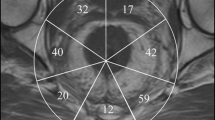Abstract
Objectives
This study demonstrates the application of time-action analysis to the evaluation of task performance of diagnostic laparoscopy with laparoscopic ultrasonography.
Methods
The first 25 diagnostic laparoscopies with laparoscopic ultrasonography performed by a surgical resident were analyzed and compared with the outcomes of these procedures performed by an experienced surgeon. The time, actions, and correctness of task performance were evaluated. Furthermore, outcome correctness and postoperative complications were assessed.
Results
No postoperative complications occurred. The resident made one wrong diagnosis, for which the cause was detected by peroperative analysis. Additionally, 1% of the subtasks were performed only partially, 4% not at all, and 2% using the wrong technique. The efficiency for most diagnostic tasks remained significantly lower than that of the experienced surgeon (p<0.001).
Conclusions
Time-action analysis can be used to provide detailed insight into the quality and efficiency of learning surgical skills. It enables objective measurement of correctness in task performance as well as time and action efficiency.
Similar content being viewed by others
References
Barnes RM (1980) Motion and time study: design and measurement of work. John Wiley & Sons, New York, pp
Bessell JR, Baxter P, Riddell P, Watkin S, Maddern GJ (1996) A randomized controlled trial of laparoscopic extraperitoneal hernia repair as a day surgical procedure. Surg Endosc 10: 495–500
Boer den KT, Wit de LT, Gouma DJ, Dankelman J (1999) Perioperative time-motion analysis of diagnostic laparoscopy with laparoscopic ultrasonography. Br J Surg 86: 951–955
Chew FS, Smirniotopoulos JG (1993) Educational efficacy of computer-assisted instruction with interactive videodisc in radiology. Invest Radiol 28: 1052–1058
Claus GP, Sjoerdsma W, Jansen A, Grimbergen CA (1995) Quantitative standardised analysis of advanced laparoscopic surgical procedures. Endosc Surg Allied Technol 3: 210–213
Cuschieri A, Wilson RG, Sunderland G, McIntyre IM, Youngson GG, Cash JD, Mackay N, Shields SR (1997) Training initiative list scheme (TILS) for minimal access therapy: the MATTUS experience. J R Coll Surg Edinb 42: 295–302
Delden van OM, Wit de LT, Nieveen van Dijkum EJM, Smits NJ, Gouma DJ, Reeders JWAJ (1997) Value of laparoscopic ultrasonography in staging of proximal bile duct tumors. J Ultrasound Med 17: 7–12
Deschamps C, Allen MS, Trastek VF, Johnson JO, Pairolero PC (1998) Early experience and learning curve associated with laparoscopic Nissen fundoplication. J Thorac Cardiovasc Surg 115: 281–284
Gordon TA, Bowman HM, Tielsch JM, Bass EB, Burleyson GP, Cameron JL (1998) Statewide regionalization of pancreaticoduodenectomy and its effect on in-hospital mortality. Ann Surg 228: 71–78
Gouma DJ, de Wit LT, Nieveen van Dijkum EJM, VanDelden OM, Bemelman WA, Rauws EAJ, VanLanschot JJB, Obertop H (1996) Laparoscopic ultrasonography for staging of gastrointestinal malignancy. Scand J Gastroenterology 218: 43–49
Leval de MR (1997) Human factors and surgical outcomes: a Cartesian dream. Lancet 349: 723–725
Lieberman MD, Kilburn H, Lindsey MBMF (1995) Relation of perioperative deaths to hospital volume among patients undergoing pancreatic resection for malignancy. Ann Surg 222: 638–645
Nieveen van Dijkum EJM, DeWit LT, VanDelden OM, Rauws EAJ, VanLanshot JJB, Obertop H, Gouma DJ (1997) The efficacy of laparoscopic stating in patients with upper gastrointestinal tumors. Cancer 79: 1315–1319
Rosser JC, Rosser LE, Savalgi RS (1997) Skill acquisition and assessment for laparoscopic surgery. Arch Surg 132: 200–204
Shapiro SJ, Paz-Partlow M, Daykhovsky L, Gordon LA (1996) The use of a modular skills center for the maintenance of laparoscopic skills. Surg Endosc 10: 816–819
Society of American Endoscopic Surgeons (SAGES) Integrating advanced laparoscopy into surgical residency training. Surg Endosc 12: 374–376
Traverso LW, Koo KP, Hargrave K (1997) Standardizing laparoscopic procedure time and determining the effect of patient age/gender and presence or absence of surgical residents during operation: a prospective multicenter trial. Surg Endosc 11: 226–229
Wickens CD (1992) Memory, learning, and training. In: Pearson L, Caterer MC (eds) Engineering psychology and human performance. HarperCollins, New York, pp 211–257
Author information
Authors and Affiliations
Additional information
Online publication: 3 April 2001
Rights and permissions
About this article
Cite this article
den Boer, K.T., de Wit, L.T., Davids, P.H.P. et al. Analysis of the quality and efficiency in learning laparoscopic skills. Surg Endosc 15, 497–503 (2001). https://doi.org/10.1007/s004640090002
Received:
Accepted:
Published:
Issue Date:
DOI: https://doi.org/10.1007/s004640090002




